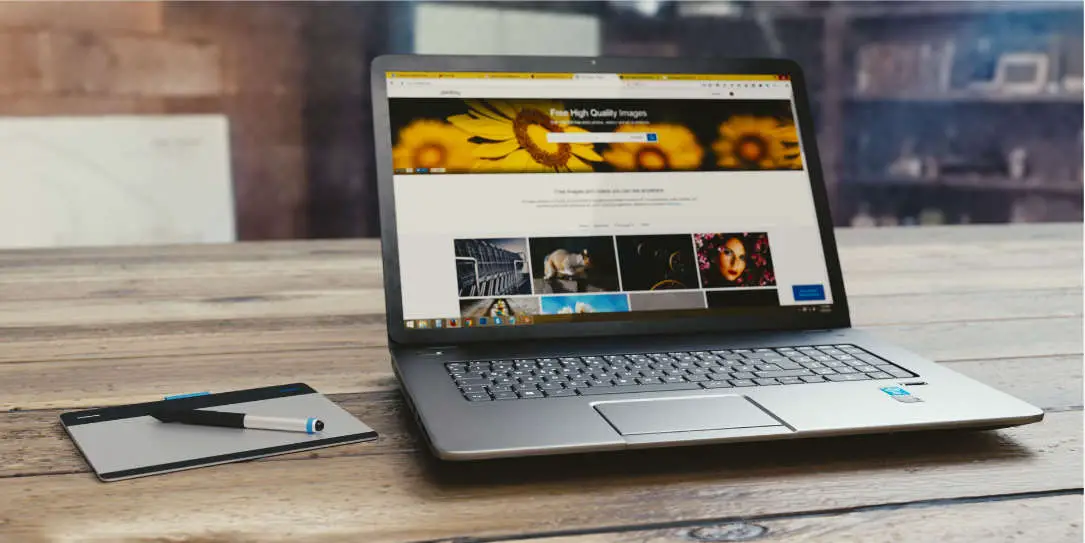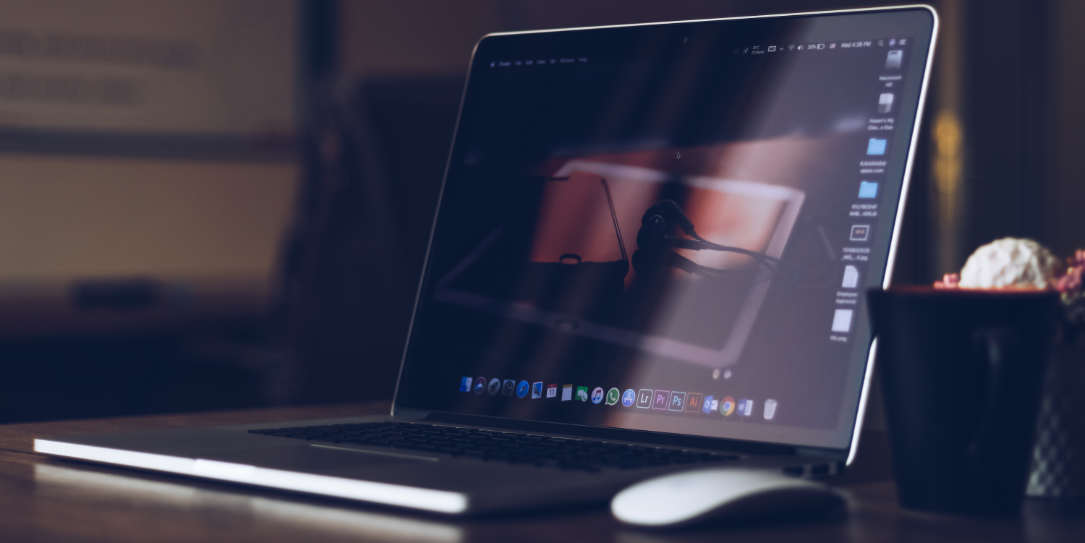Buying a new computer can be a daunting task for many users out there. But running the buying gauntlet extends to those who are buying a used PC or Mac, as well. Buying a used PC or Mac can actually be far more intimidating than buying new since there are no warranties and you don’t necessarily know the previous owner.
Buying a used PC or Mac can save you a ton of money, and you can end up with a very good machine, if you do your research and use these tips we’re sharing with you. I recently had my own “used PC or Mac” buying adventure when I picked up a used 2015 MacBook Pro for around US$1,000.
Buying A Used PC or Mac
In this tips and tricks guide to buying a used PC or Mac, we hope to steer you in the right direction to get the best machine for the money. Let’s jump into the full buying a used PC or Mac guide!
Desktop, AIO, or laptop?
First, you have to decide what sort of device you’re looking for. Are you wanting a full desktop, an All-In-One (which is a combo display and computer), or a laptop? Most people buying a used PC or Mac choose laptops or AIO’s, which tend to sell the best and command higher prices. So if you’re okay with a desktop, you might be able to land an even better deal, with the knowledge that you will need to purchase a display for it as well.
Regardless of what type of device you’re looking at, the information below applies to them all.
What are your needs?
Before you can start bidding or looking at buying a used PC or Mac you need to do some research. What are your needs?
- Display size: What size display do you want? 13″, 14″, 15″, 17″ or even 27″ with AIO’s. Display resolution also applies here, and we recommend finding something with at least 1920×1080 resolution.
- PC or Mac: What ecosystem do you want to live in? PCs are generally cheaper than Macs even in the used market.
- Budget: How much do you want to spend when buying a used PC or Mac?
- Use Case: What will you be using your purchase to do? Basic web browsing? Data entry? Word processing? Video/Photo editing? Gaming?
- Specifications: What are the bare minimum specifications you can live with and what are the ones you really want? What will you be using the machine for?
Most of the questions above you will have to mull over when buying a used PC or Mac. For specifications, our suggestions are to always try and find the highest ones you can, especially when buying a used PC or Mac that is a few years older, like our 2015 MacBook Pro.
Hardware Specifications
We’re not going to go over a whole bunch of specifications, but here are the basics you need to look out for:
- CPU: This is the central processing unit the computer uses to complete the tasks you throw at it. For the most part, CPUs are divided into Intel and AMD, generally with 3 tiers from which to choose. For example, Intel has the Core i3, Core i5, and Core i7 (newer models may go to the Core i9). If you can find a Core i7, that is going to be a better choice. Even a Core i5 is a decent choice, but we would not recommend even looking at the Core i3 in the used market, be it a PC or Mac.
- GPU: This is the graphics processing unit the computer uses to process graphics that render to your display. There are two types of GPU’s:
- Integrated: This GPU is soldered on the mother/logicboard and is good for basic computing tasks. This GPU will get most people through daily tasks but is unfit for graphics-intensive tasks such as gaming, video editing, or photo editing.
- Dedicated: This GPU is a separate chip on the mother/logicboard whose sole job is to process intensive graphics. This GPU is suited for heavier graphics tasks and can come in a variety of models. Some GPUs have dedicated RAM, making them more desirable. Look for GPUs with 2GB to 4GB of dedicated RAM.
- RAM: This is the random access memory that helps the CPU compute the data and processes you are inputting into the system. Think of it as a temporary holding area for certain tasks and processes while tasks ahead of those are being processed through the CPU and GPU. The more RAM you have the better. For today’s use, we wouldn’t recommend anything under 8GB of RAM. 16GB of RAM is better, and if you can manage to get 32GB of RAM or better then you’re in good shape. Even if you can’t find enough RAM installed, you may be able to upgrade the RAM later.
- HDD/SSD: This is the hard disk drive or solid-state drive. When buying a used PC or Mac this component is something you should absolutely make sure is right. When buying a used PC or Mac, especially older models, most will have an HDD. HDDs are less efficient than SSDs so look for an SSD if possible. These can usually be upgraded later as well so it’s not a deal-breaker if you can’t find an SSD.
- Software: You should make sure the hardware you’re buying supports the latest macOS or Windows 10 operating system. We strongly advise against buying devices that only support Windows 7 or below or below macOS Mojave.
There are other specification considerations you could make like mother/logicboard type, power supply, I/O and other things, but the above are the most important.
Before buying a used PC or Mac research different models
Before you even start looking at prices or sales you should research the PC or Mac you want to buy. Do some online research into the particular model in which you’re interested. Find out the reliability of that model. Read reviews of it from when it first released. Read forums and Amazon reviews of that particular model. Gather all of the opinions you can to help you make a more informed choice.
Now that you know what specifications to look for, be sure to hunt those down and avoid buying a used PC or Mac with low-end specifications. Find out what the typical selling price for your model is by checking sales on eBay. Often times, buying a used PC or Mac from Facebook Marketplace or Craigslist might cost you more. Not because the device is worth it, but because the seller is attempting to maximize their price. So be informed and prepared to negotiate.
Places to buy a used PC or Mac
There are plenty of places to buy a used PC or Mac and we’ve listed a few of the more popular choices below:
- eBay: This is one of the more popular outlets to buy a used PC or Mac, and it still remains one of the best options. eBay has its issues and you should research the seller and read their reviews before making a purchase. eBay also has buyer protection, but in our experience, eBay often sides with sellers. Other things you can do to maximize your purchase on eBay is to find listings that offer warranties or guarantees, watch the shipping costs as some sellers will offer a device for a low price but charge insane shipping prices. You should also ask to see as many photos as you can if the listing doesn’t have enough. The point is, research the heck out of the seller and the listing before purchasing.
- Swappa: Swappa is much like eBay, with the rules listed above for eBay apply here as well. I have found Swappa sellers more willing to work with you on price and better at supplying images and serial numbers when asked. I purchased my 2015 MacBook Pro from Swappa and it was a great experience.
- Craigslist: The wild wild west of online selling. We wouldn’t recommend buying from Craigslist, but if you do our best recommendation is to be safe and maybe take someone who knows something about computers with you to inspect the device before purchase.
- Facebook Marketplace: We’re also not fans of Facebook Marketplace for buying a used PC or Mac. It’s better than Craigslist but still a shady option as you’re not sure you can trust the seller. The rules for Craigslist would apply here. Take someone who knows something about computers, and, if at all possible, test the computer before handing over any money. One advantage Facebook has over Craigslist is that you can view the seller’s profile and find out more about them.
- Online resellers: There are plenty of places to find refurbished and used computers like Amazon, MacSales or Woot. These are often the best choice but you will also pay more as these devices are generally inspected and refurbished and come with some sort of limited warranty.
The most important thing is to research the prices on each outlet and compare specifications between them to see what you’ll be paying for.

Tools that could help in buying a used PC or Mac
Using tools to help in buying a used PC or Mac can go a long way to not getting screwed over. Here are a few helpful tools we use when we research used devices.
- PowerMedic: PowerMedic is a website that keeps a database of Mac serial numbers. Here you can look up the serial number of the Mac you want to purchase and find out what its original configuration was. If you’re working with a good seller, they will provide the serial number for you without question.
- Apple Check Coverage: This is Apple’s service and support check website and it will tell you if the serial number of the Mac you’re thinking of purchasing is covered under Apple Care. Most of the time, used computers will not have any sort of manufacturer warranty but in the case of Macs, sometimes they do. It’s always best to check and if it is covered then it’s an even better deal.
- Apple Exchange/Repair: Apple runs a decent exchange and repair program where they list the devices they currently honor repairs and exchanges for. Check your serial number there for any repairs or exchanges covered under that program. For example, the 2015 MacBook Pro I purchased was eligible to have its battery replaced because of a recall. So now my used MacBook Pro has a brand new fresh battery in it. It’s worth checking.
- Dell Service Tag Lookup: Dell also offers a database that allows you to find their service tag (serial numbers) history. This database shows the configuration of the device as it was when it sold new. This is helpful to ensure what the buyer is listing matches. If it doesn’t, ask what was changed and why. It’s also a good source for part numbers and replacement part listings.
- HP Product Warranty Check: HP also offers something similar to Dell and Apple. So before buying a used PC or Mac, I would recommend obtaining that serial number or service tag number and running these tools for more information.
- Lenovo Warranty Lookup: Finally, Lenovo also offers the same sort of deal and has some useful tools to help you research potential used purchases.
So far this is a boatload of information and a basket full of tools that might seem daunting and overwhelming. But buying a used computer is an investment and these tools are certainly going to help you make a more informed decision and may even save you a lot of money.
Wrap Up
As we already mentioned, buying a used PC or Mac is as important as buying one new. In most cases, it’s even more important to arm yourself with knowledge before going in for a purchase. When you buy new, you have a warranty and you can mostly trust that what the manufacturer is selling you is what you will get.
When you buy used, you have to do your due diligence to make sure the product is what the seller says it is and be sure it is fully functioning. Most of the time you’ll be buying these items in “as-is” condition. Places like eBay and Swappa are often better because some sellers offer limited warranties and returns, but you still must do all you can to protect yourself. Even a used PC or Mac purchase is an investment. Just because you’re buying used. Doesn’t make the money you’re spending worth any less. It is still your money and you deserve to get the best for it.
On another note, if purchasing from Facebook Market Place or Craigslist personal safety should always be your main consideration. Only meet sellers in populated places like coffee shops or malls. Also, find a place that has free Wi-Fi and power outlets so that you can test the device before purchase. If purchasing a desktop or AIO, then that will be a bit more complicated. But can still be done if you really put in the effort.
What Do You Think?
Hopefully, this article gave you some tips and ideas for successfully buying a used PC or Mac. Our tips aren’t the only ones out there. So be sure to research and find other sites that may offer some alternatives and ideas we don’t have here. Use what you think will work for you.
What do you think about buying a used PC or Mac? Do you have any tips and tricks you want to share? Do you have any questions we didn’t answer or need more clarification? Let us know in the comments below or on Twitter, Facebook, or MeWe.
In some of our articles and especially in our reviews, you will find Amazon or other affiliate links. As Amazon Associates, we earn from qualifying purchases. Any other purchases you make through these links often result in a small amount being earned for the site and/or our writers. Techaeris often covers brand press releases. Doing this does not constitute an endorsement of any product or service by Techaeris. We provide the press release information for our audience to be informed and make their own decision on a purchase or not. Only our reviews are an endorsement or lack thereof. For more information, you can read our full disclaimer.
Last Updated on February 12, 2021.













Comments are closed.